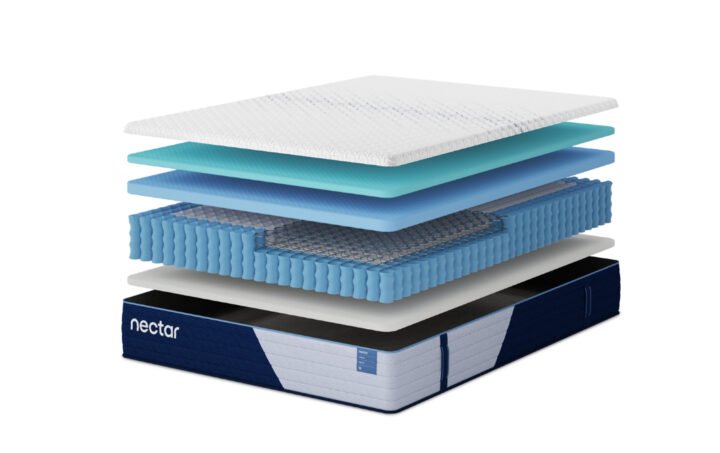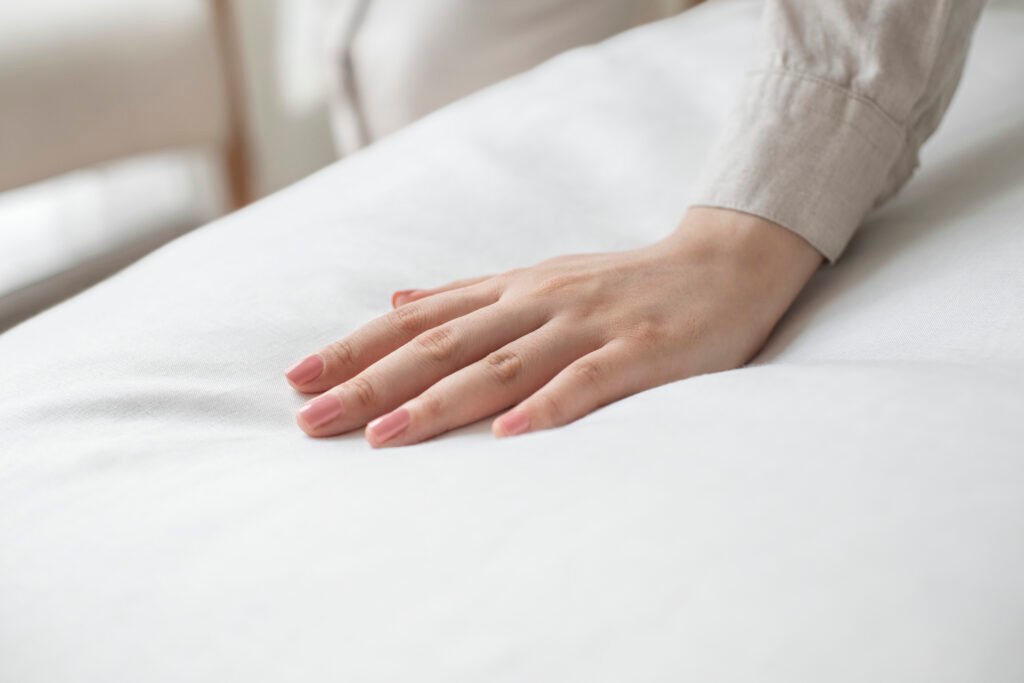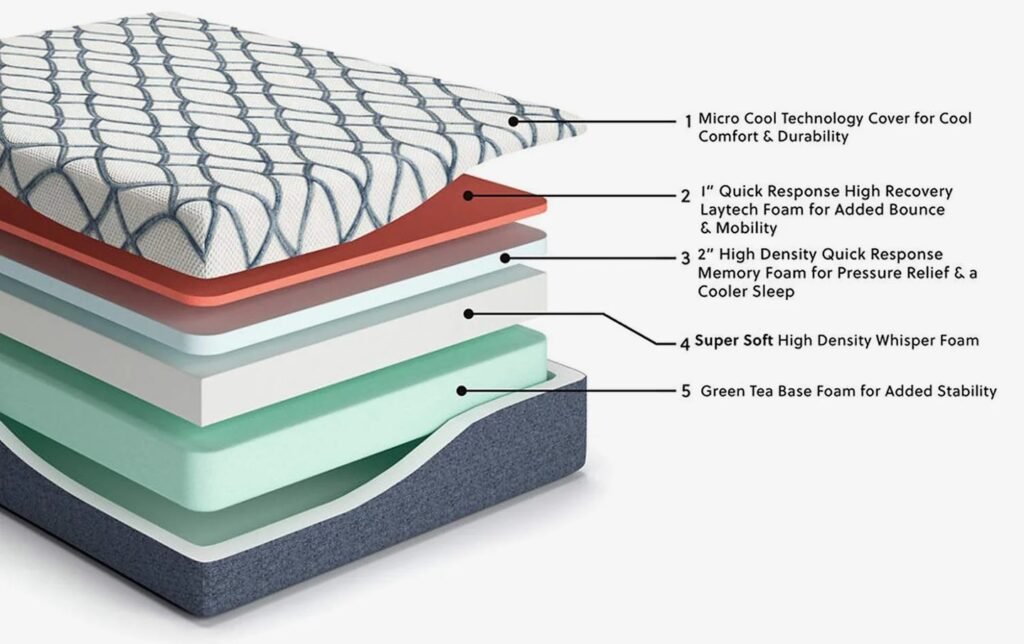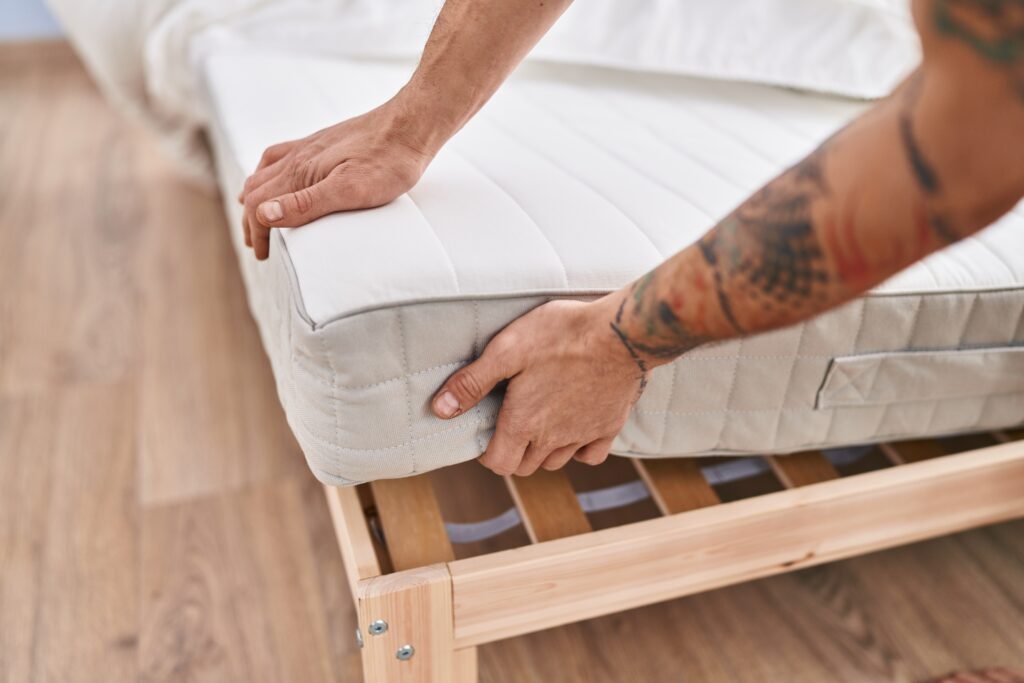Different Mattress Types Explained: Find Your Best Fit
Each mattress type comes with unique benefits designed to support different needs, from comfort levels to sleep positions. If you’ve ever walked into a mattress store and felt lost among memory foam, latex, or hybrids, you’re not alone. The key is to understand how each style works and who it suits best. Whether you sleep hot, move a lot, or need extra support, there’s a mattress to make your nights more restful. In this guide, we’ll break down the most common mattress types and highlight quick tips to help you pick your right fit.
Memory Foam Mattress

Memory foam mattress is known for their “hugging” feel. It molds to your body, providing pressure relief for shoulders, hips, and back. For side sleepers, this can be a game-changer since it reduces pressure points and promotes spinal alignment. Another big plus is motion isolation; if your partner tosses and turns, you’re less likely to feel it.
On the downside, traditional memory foam tends to trap heat. Thankfully, many newer models now include cooling gels or breathable foam layers. This innovation makes them more appealing to hot sleepers.
Moreover, memory foam is especially popular for people seeking pain relief or those who want a soft, contouring surface. However, if you like a bouncy feel or strong edge support, this may not be your top choice. When considering this mattress type, think about your temperature and motion preferences.
Innerspring Mattress

The innerspring mattress is a classic choice that has been around for decades. It is built with a system of steel coils, offering a firm and supportive sleep surface. The springs provide natural bounce, which makes movement easier, ideal for combination sleepers who shift positions throughout the night.
Innerspring mattresses also tend to sleep cooler, as the coil system allows better airflow compared to dense foams. They’re a great pick for people who dislike feeling “stuck” in their bed.
However, innerspring mattresses may not offer as much pressure relief as memory foam or latex. Over time, cheaper models can sag or create uneven surfaces. So, if you’re considering this mattress type, pay attention to coil count and quality for longevity. And, add a plush pillow top to balance firmness with comfort. This style remains a reliable choice for sleepers who value breathability and support.
Hybrid Mattress

A hybrid mattress blends two or more mattress types, often combining the comfort of foam with the support of coils. Typically, you’ll find a pocketed coil base topped with memory foam, latex, or gel-infused foam layers. This design creates the best of both worlds: sturdy support with pressure-relieving comfort.
Hybrids are especially versatile, appealing to couples with different sleep needs. The coils promote airflow, keeping the bed cooler, while the foam layers help with contouring and motion isolation.
The only downside is that hybrids usually come with a higher price tag compared to conventional innerspring or foam options. That said, many sleepers consider them worth the investment. If you’re torn between firmness and softness, this mattress type may be the perfect middle ground. It offers a balanced feel that works for side, back, and stomach sleepers, making it highly adaptable.
Latex Mattress

Latex mattresses stand out as a natural and eco-friendly option. They’re made from rubber tree sap and have excellent durability, resilience, and support. Unlike foam options, latex doesn’t create a deep sinking feeling. Instead, it offers a responsive and slightly bouncy surface that quickly adjusts to movement.
The best thing about latex mattresses is temperature regulation. Their open-cell structure allows air to flow, keeping sleepers cool throughout the night. For people with allergies, natural latex is also resistant to dust mites and mold.
On the flip side, latex mattresses are heavier and often come at a premium price. However, they can last longer than most other types, making them a smart long-term investment. In short, this mattress type is best suited for eco-conscious buyers, hot sleepers, and those who want supportive comfort without losing responsiveness.
Traditional/PU Foam Mattress
Traditional or PU foam is the king of budget-friendly mattresses. Made from polyurethane, these mattresses are lightweight, easy to move, and usually more affordable than memory foam, latex, or hybrids. They provide a soft, cushiony surface that works well for guest rooms, kids’ beds, or anyone on a tighter budget.
This foam absorbs motion fairly well, making it better for light sleepers who share a bed. But when compared to other mattress types, PU foam may lack long-term durability. They can sag over time and often don’t provide the same level of pressure relief and responsiveness.
In essence, PU foam mattresses are best for people who need a quick, affordable solution. They’re easy to find, come in many thicknesses, and work well with most bed frames. While not the most luxurious option, this mattress type is practical for short-term use or as a backup bed.
Quick Tips to Find Your Best Fit
With so many options available, narrowing down your choice can be tricky. It is important to match your mattress to your lifestyle and sleep habits. Here, we have gathered some quick tips as a checklist to guide your decision, ensuring you pick the mattress type that helps you wake up refreshed and ready.
Identify Your Sleeping Style

Your sleeping position is one of the biggest factors in this matter. Side sleepers usually need a softer surface that cushions the shoulders and hips, like memory foam or a plush hybrid. Meanwhile, back sleepers may require medium-firm beds that maintain spinal alignment, such as innerspring or latex. Likewise, stomach sleepers often do best with firmer support to prevent the midsection from sinking deeply and straining the back. Now, for combination sleepers, those who switch positions, a hybrid is ideal for its balance of support and comfort. Take note of how you naturally sleep and how you feel in the morning.
Check Firmness Levels

Firmness is more than personal preference; it directly impacts comfort and support for different sleepers. When choosing a mattress type, remember that firmness isn’t universal. A “medium-firm” mattress may feel soft to a heavier person and firm to a lighter sleeper. Generally, side sleepers lean toward softer beds, back sleepers often prefer medium, and stomach sleepers need firmer surfaces. Testing mattresses in-store or checking firmness ratings online can help you decide. Many brands use a 1–10 firmness scale, with 1 being plush and 10 being extra firm. Aim for a mattress that supports your spine without feeling rigid or uncomfortable.
Factor in Your Body Weight

Body weight plays a bigger role in comfort than many realize. Lighter sleepers (under 130 pounds) may not sink deeply, so softer foams provide better contouring. Conversely, average-weight sleepers usually do well with medium or medium-firm beds, like hybrids or latex. Whereas heavier individuals often need thicker, firmer mattresses to avoid sinking too far and straining the spine. Also, keep in mind that if a mattress is too soft for your weight, it can wear out faster. Always consider your body weight alongside firmness and material when choosing the best fit, as it directly affects comfort and performance.
Consider Temperature Needs

If you tend to sleep hot, temperature regulation should guide your mattress type choice. Memory foam often traps heat, but gel-infused or open-cell variations improve airflow. Additionally, innerspring and hybrid mattresses naturally allow more breathability due to the coil systems. Latex is another great option; it’s naturally cool and ventilated. On the other hand, if you get cold at night, denser foams can provide extra warmth. Furthermore, consider your climate, as it may demand breathable designs or heat-retaining options. By knowing your temperature needs, you can avoid sleepless nights and ensure your mattress keeps you comfortable year-round.
Test for Motion Isolation
Sharing a bed? Motion isolation could be the deciding factor for your perfect mattress fit. Foam mattresses, especially memory foam, excel here by absorbing movements so you don’t feel your partner moving on the bed. Likewise, hybrids with thick comfort layers can also perform well, while innerspring mattresses often transfer more motion due to their coil construction. This is why couples should test how a mattress handles movement before buying, either in a store or through sleep trials. Even small disturbances can impact rest, so it’s worth prioritizing if you’re a light sleeper.
Assess Edge Support

Edge support is often overlooked but plays a crucial role in daily comfort. A mattress with strong edges lets you sit or sleep near the perimeter without feeling like you’ll roll off. Innerspring and hybrid mattresses usually provide the best edge reinforcement, while all-foam models may sink more. If you share a bed, good edges can also give you extra usable surface area, making the mattress feel larger. This factor matters most if you frequently sit on the side of your bed to put on shoes or relax. When evaluating a mattress type, test how the edges hold up under weight.



